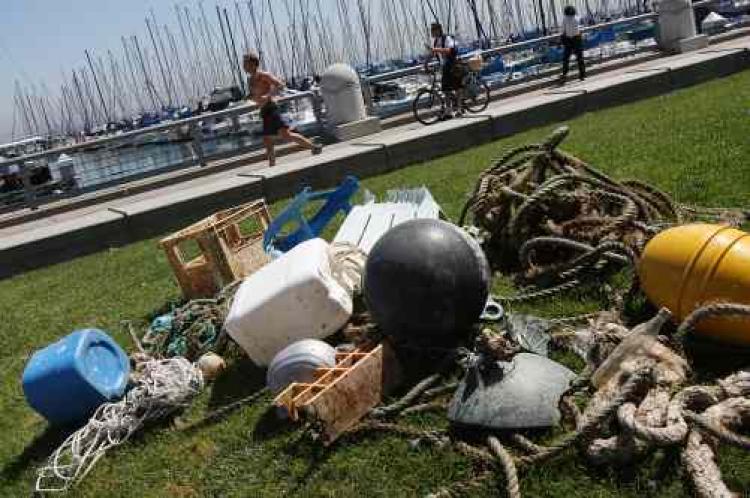The random clumps of plastic litter that a group of California scientists found in the Pacific Ocean, just 1,000 miles off of the California coast and about the same distance north of Hawaii is known as the Great Pacific Garbage Patch.
“It’s very upsetting for all of us to see the amount of plastic we were collecting,” said Mary T. Crowley, the founder of Ocean Voyages Institute, at a press conference in San Francisco on Tuesday. She had just returned from an exploration of the vortex of floating plastic garbage.
The problem, according to the scientists, is that much of the plastic has already broken down under the ultraviolet rays from the sun and is now spread over a vast area as molecular strains that are impossible to detect with the naked eye or satellites.
Most of the plastic litter found in that region is only the size of a thumbnail and is part of a soupy mix, revealed scientists with the Scripps Institution of Oceanography.
“Our goal with this expedition was to bring back photographs and film to show people what’s out there, but also to experiment with a solution and find ways to clean up the plastic,” said Crowley.
Their month-long expedition, named project Kaisei, which means ocean or planet in Japanese, was to research the Great Pacific Garbage Patch, learn about the mysterious vortex, thought to be twice the size of Texas, or four times the size of Japan.
Anything floating away from the west coast of North America or the East Coast of Asia is captured in the currents of the North Pacific Ocean and begins to turn slowly clockwise, according to scientists.
Pacific Garbage
On one occasion, scientists pulled out of the garbage-littered ocean water large quantities of jelly fish and pieces of plastic mixed together, which made the scientists realize that a lot of the sea life may be ingesting the plastic.
“You could see pieces of plastic inside and outside the jellyfish, and you could see the jellyfish ingesting the plastic,” says Crowley in one video filmed during the August mission.
A second ship was launched from the Scripps Institution of Oceanography in San Diego early last month aided the Kaisei. The New Horizon ship, was funded by a $600,000 grant from the University of California. With a crew of 20 graduate students, the Horizon sailed off to measure the size of the patch and its effects on wildlife throughout the food chain.
The Kaisei expedition was funded by international recycling companies in addition to funding from individual donors and the key funder Deutsche Bank AG. The recycling companies see an opportunity to retrieve the plastic material and recycle it into diesel fuel.
The Kaisei expedition intends to publish a research study within several months. The scientists will look at the hard data as to how decomposing plastic over the last few decades has mixed with phytoplankton and zooplankton. The research group will also examine if net-trawling techniques could be used to clean up the massive debris.
“I really feel that oceans are the blue heart of our planet, and the ocean currents are the veins that are now getting clogged with plastic,” Crowley said.
Different fragments of plastic often turn up in the bellies of marine mammals, and fish, and a study cited by the National Oceanic and Atmospheric Administration shows that more than 100,000 marine mammals die as a result of trash each year.
In her blog posted Sunday, Crowley said, “We all know that plastic lasts. There is no away when we throw plastics away. Every bit of plastic made is still on the planet.”






